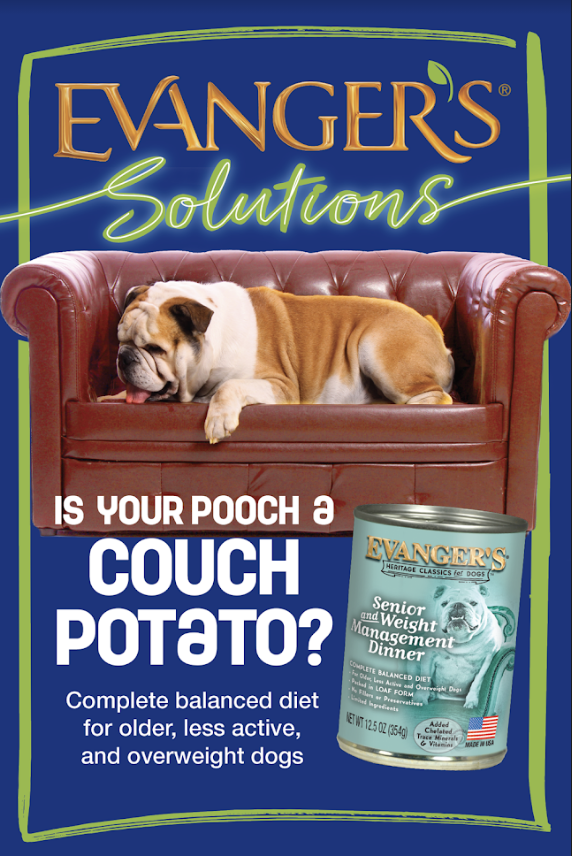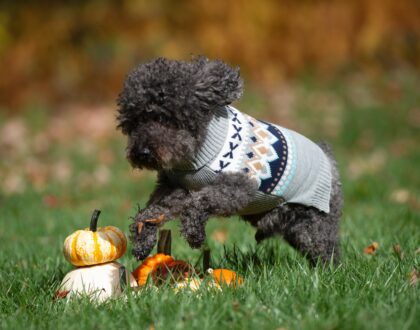Obesity in Dogs 101

by Ian Germann
Just like in humans, dogs can become obese if they consume more calories than what they burn through their daily exercise and activities. With obesity being an accumulation of excess body fat, this condition puts significant strain on a dog’s body, potentially leading to a variety of health problems. With an estimated 50 million dogs being overweight or obese, it’s important to understand all aspects of obesity in dogs. In this article we’ll be looking at the main causes and symptoms of obesity in dogs, and the steps you should take to prevent obesity in your pup.
Causes
While it may seem as simple as “calories in versus calories out”, there are a wide variety of reasons why a dog may become obese, such as…
Overfeeding: Feeding your dog more food than what they need, or feeding them too many high-calorie treats or table scraps can lead to weight gain and obesity.
Lack of exercise: Dogs who don’t get enough physical activity may not burn enough calories to maintain a healthy weight.
Genetics: Due to their genetics. dog breeds such as Labrador Retrievers and Beagles are more prone to obesity than others.
Age: With slowing metabolisms and less energy to burn calories, obesity is much more common in older dogs then in younger ones.
Neutering/spaying: Sterilized dogs have a slower metabolism, which means they may need fewer calories to maintain a healthy weight.
Medical conditions: Certain medical conditions, such as hypothyroidism and insulinoma, can cause weight gain in dogs.
Symptoms
Excessive body weight: The most easily noticeable symptom of obesity, dogs that are significantly overweight or obese may have an obvious excess of body fat, especially around the abdomen, back and neck.
Difficulty feeling ribs or spine: When you run your hands along your dog’s rib cage or spine, you may have difficulty feeling the individual ribs or spine due to an excessive layer of fat.
Lack of a visible waistline: Dogs with a healthy body condition should have a visible waistline when viewed from above, where the body narrows between the rib cage and hips. In obese dogs, this waistline may be difficult to see or entirely absent.
Difficulty moving or reduced stamina: Obese dogs may show reluctance or difficulty in moving or exercising. They may also tire more easily due to the extra weight they’re carrying.
Labored breathing or panting: Excessive weight can put additional strain on a dog’s respiratory system, leading to labored breathing or panting, even in mild activity.
Joint problems: Overweight or obese dogs are at increased risk of developing joint problems, such as arthritis or joint pain, due to the added stress on their joints.
Change in appetite: While not always the case, some obese dogs may have an increased appetite or show food-seeking behaviors.
Poor coat condition: Dogs that are overweight or obese may have a dull, unkempt coat due to difficulty grooming themselves or reduced physical activity.
Prevention
Regular exercise: Provide regular exercise and physical activity for your dog to help them burn calories, maintain a healthy weight and promote overall fitness.
Avoid free-feeding: Avoid leaving food out all the time for your dog to graze on. Instead, establish regular meal times to help control your dog’s food intake and prevent them from overeating.
Monitor body condition: Regularly monitor your dog’s body condition and weight, adjusting their diet and exercise routine as needed to maintain an ideal body weight.
Provide mental stimulation: Dogs can also gain weight due to boredom or anxiety, which may lead to overeating. Provide mental stimulation through puzzle toys, training sessions, and other activities to keep your dog mentally engaged and prevent them from seeking food as a form of entertainment.
Regular veterinary check-ups: Schedule regular check-ups with your veterinarian to monitor your dog’s weight, overall health, and to discuss any concerns or questions you may have about their diet or exercise routine.
Appropriate feeding: Feed your dog a balanced and nutritionally complete diet that is appropriate for their age, size, breed, and activity level.
Evanger’s offers 100% American Made dog food that’s free from artificial preservatives and fillers, with limited ingredient diets made from locally-sourced ingredients. Their Heritage Classic Senior & Weight Management Dog Food comes with high-quality chicken and added vitamins and minerals for a nutritious meal that’s designed to help prevent and treat obesity in dogs.
For a kibble option, their Grain Free Meat Lover’s Medley Dog Food is great for moderate weight loss, filled with nutrient-dense fruits and vegetables designed for all dog life stages. For those looking for treats, their Nothing but Natural Jerky Treats are great, low-fat options, with only one ingredient in each flavor.
If you suspect that your dog may already be overweight or obese, consult with a veterinarian to develop a weight loss plan that is safe and effective for your pet’s individual needs.
Recommended Posts

A Pet-Friendly Thanksgiving Feast with Evanger’s Pet Foods
November 25, 2024

Why Canned Sweet Potato is Better Than Canned Pumpkin for Dogs
September 27, 2024


